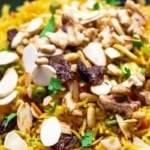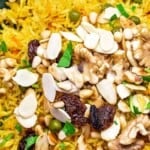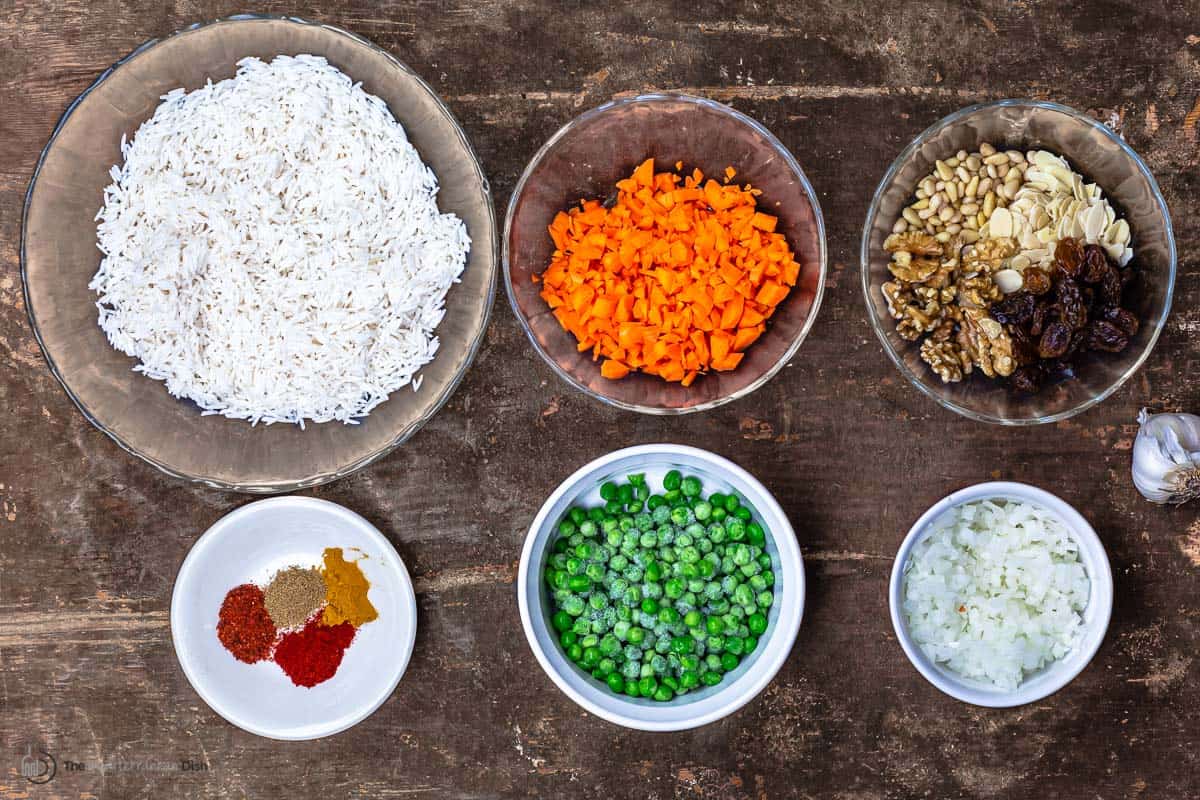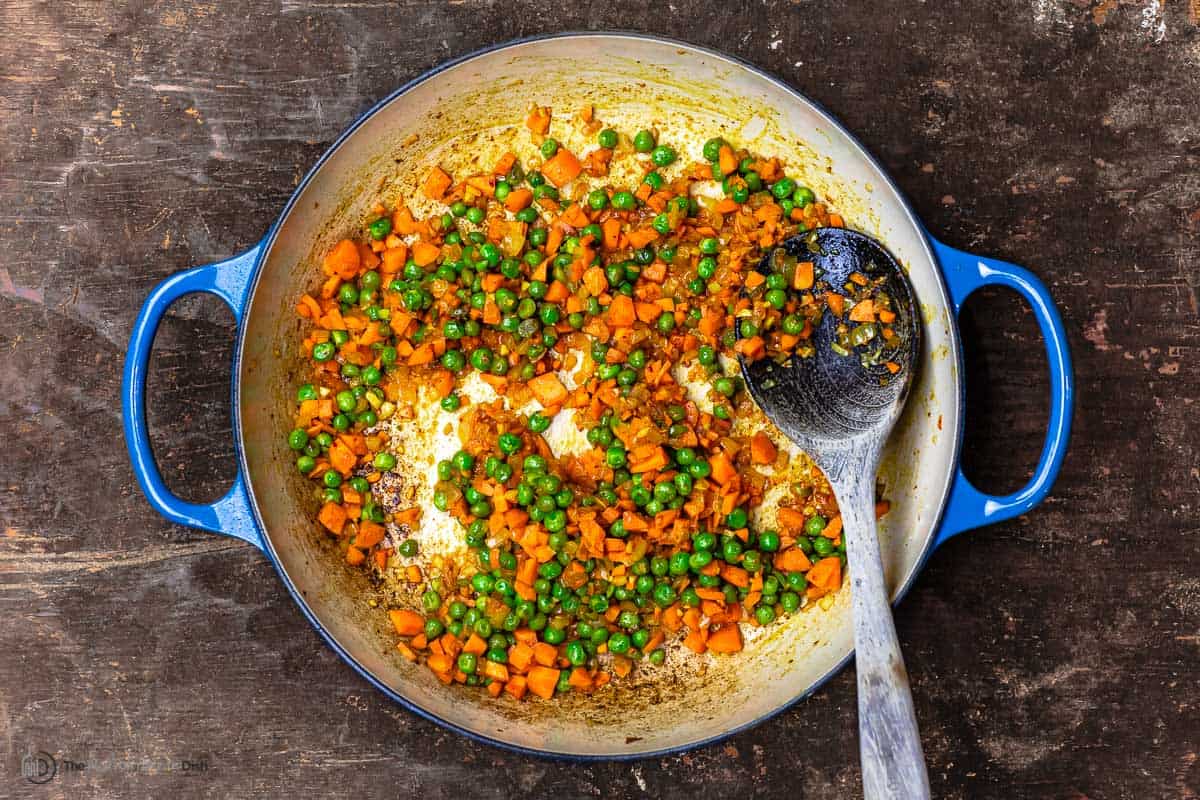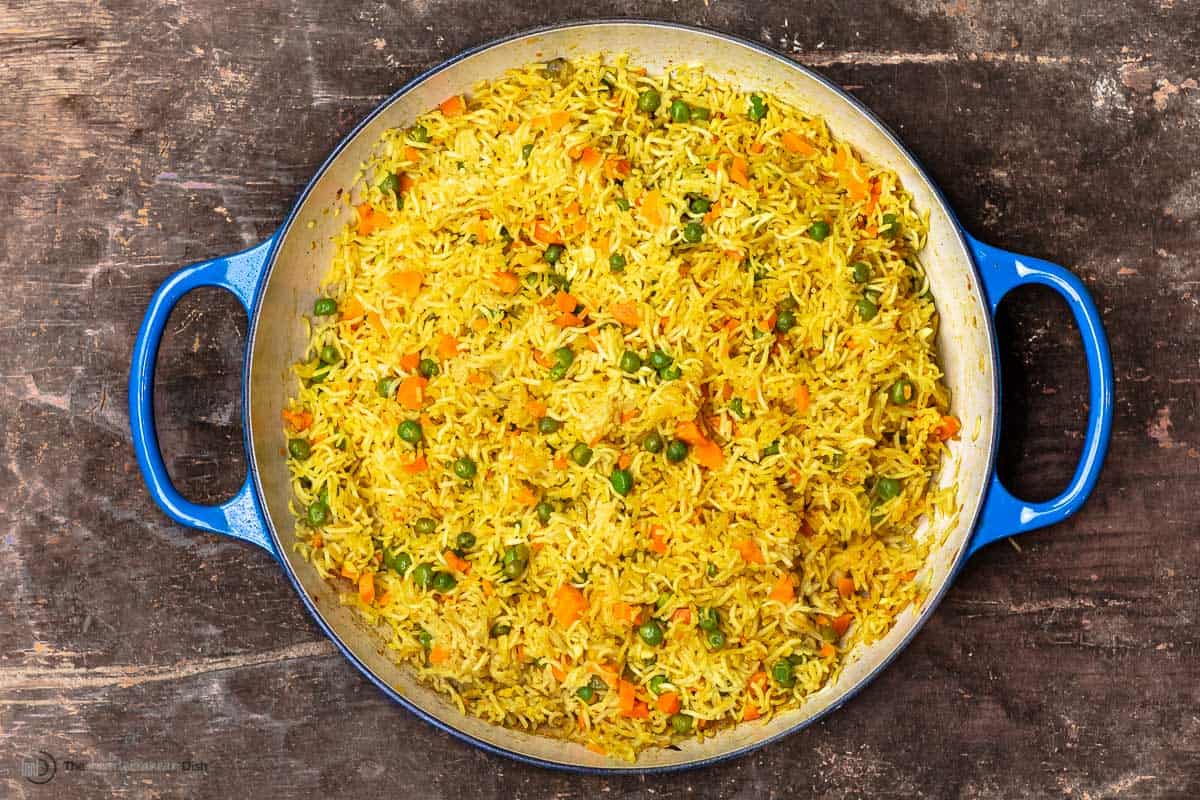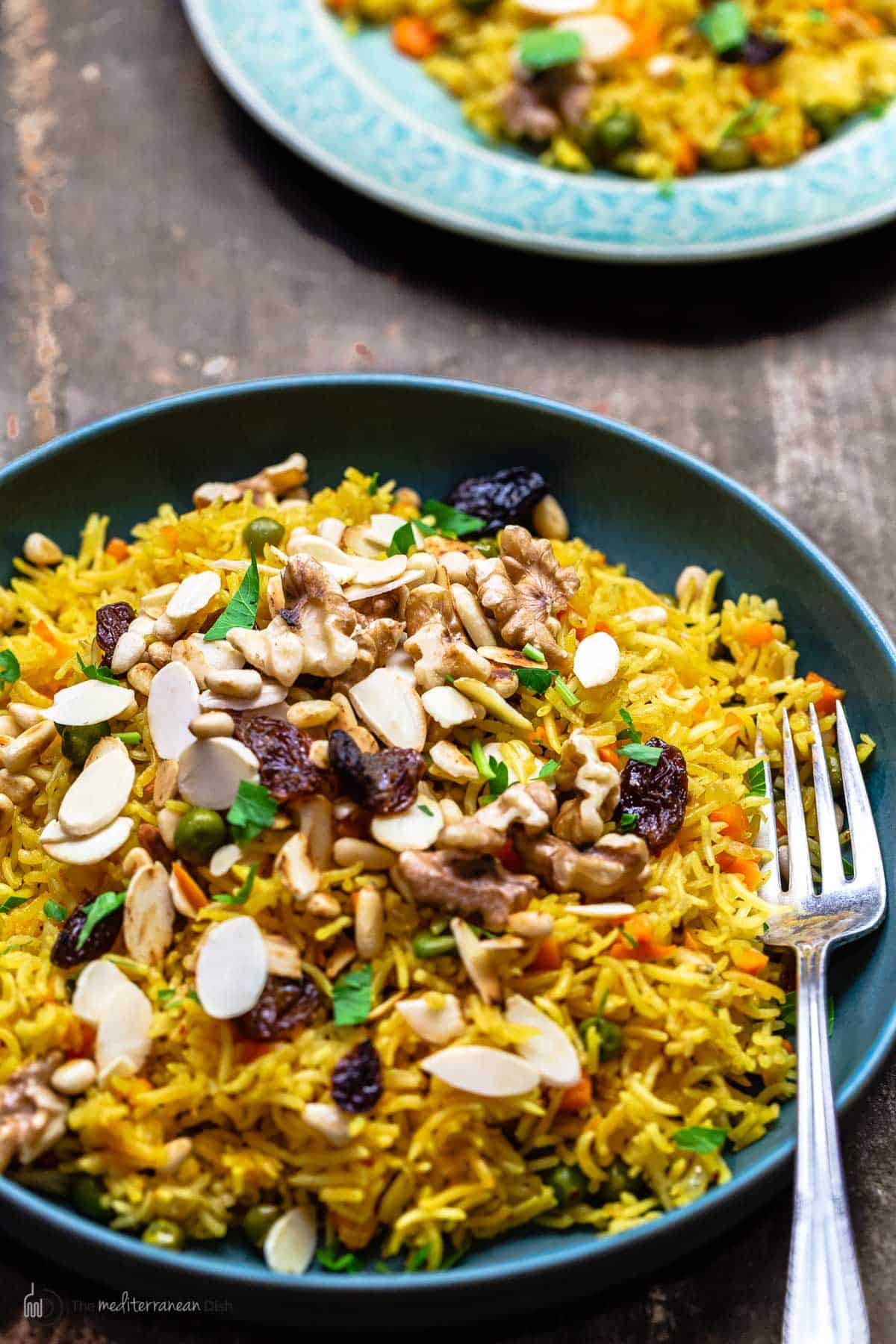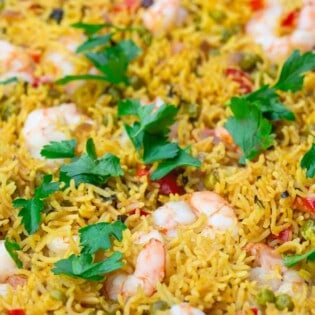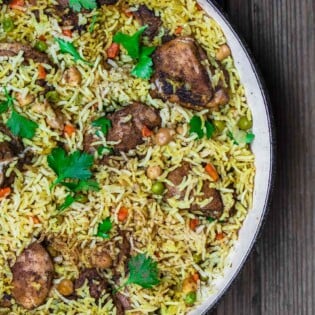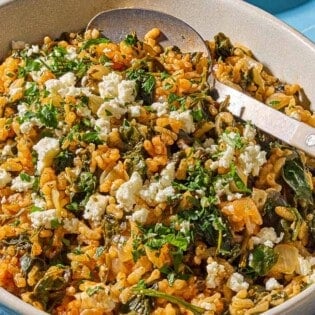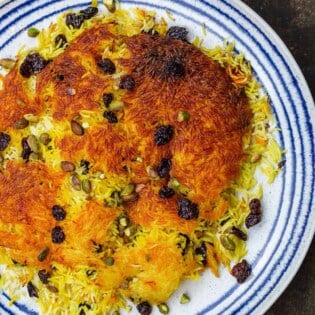Rice and peas, Middle Eastern style
Middle Eastern home cooks have a knack for playing up your basic rice and turning it into a celebratory dish. There are many rice pilaf dishes from simple rice and vermicelli to hashweh rice adorned with seasoned beef, to this rice and peas dish (entirely different from Jamaican rice and peas, however). There are as many variations of this rice pilaf as there are cooks. The most basic recipe would include rice, cooked with peas, carrots, and onions that have been sauteed in olive oil. My recipe steps it up just a couple notches with the addition of warm spices—including turmeric, which is responsible for its golden hue—along with toasted nuts and a handful of dried raisins for crunch and a hint of sweetness.
What is rice pilaf made of?
Various types of rice pilaf are enjoyed all over the world: from south Asia, to the Middle East, to east Africa, to the Caribbean, and beyond! But no matter the variations, rice pilaf usually consists of a few key ingredients: rice, aromatics, broth or water, and seasonings. The beauty of working with a blank canvas of white rice is that you can add basically whatever other ingredients you want, like lentils, vermicelli, meat, and vegetables! This version of Middle Eastern rice pilaf includes peas and carrots, onions, warm spices, toasted nuts, and chopped dried fruit.
Ingredients for this recipe
This rice pilaf recipe is made with humble ingredients that you likely already have in your kitchen. Here’s what you’ll need to make it:
Basmati riceExtra virgin olive oilYellow onion, finely choppedMinced garlicFrozen peasCarrots, peeled and choppedGround corianderPaprikaAleppo pepperGround turmericToasted nuts: I used halved walnuts, pine nuts, and slivered almondsDried fruit: I used raisins. Chopped apricots would be delicious, too!
The best rice to use for this Middle Eastern rice recipe
For this recipe, I recommend using a long grain rice such as basmati rice. Basmati rice is easy to prepare and produces fluffy, never sticky results if you follow just a few simple tips including rinsing it well (check out my earlier no-fail basmati rice tutorial). But, if you don’t have basmati rice, or you don’t like the flavor, there are plenty of substitutions you could make! Brown rice, long grain white rice, or jasmine rice would work well in this recipe. Keep in mind that different kinds of rice cook at different speeds and require different amounts of liquid.
Brown rice would taste good here, but it requires more prep. Start by soaking it in water for about one hour or until you can easily break the grain between your thumb and index finger. And check package instructions for additional details on amount of liquid and cooking time. Typically, you’ll use 1 cup brown rice to 2 cups of water, and it takes anywhere from 30 minutes to 45 minutes to cook, but soaking ahead may reduce the amount of cooking time. White rice will require soaking in water for about 20 to 30 minutes, then you’ll cook it in the water for a good 20 minutes or so. My earlier rice and vermicelli recipe details how to cook white rice. Jasmine rice is, like basmati rice, very aromatic, but it tends to get very soft and clumpy when cooking. If you don’t mind this softer texture, jasmine rice would be a good basmati rice substitute.
How to make this rice pilaf (step-by-step)
With just a little prep, you can have this fragrant Middle Eastern rice pilaf ready in no time! Here’s how you make it (printer-friendly version below):
Wash and soak the rice. Now when I say wash the basmati rice, I’m not talking about a quick swish in some water. Wash and drain 2 cups of rice a few times until the water runs clear. This is really important to avoid mushy, gluey rice. Try to drain most of the washing water and add fresh water to soak it in. Let the rice soak for about 10 minutes.Sauté aromatics and vegetables. While the rice is soaking, heat extra virgin olive oil in a heavy-bottomed pan with a lid, and add 1 finely chopped yellow onion and 2 cloves minced garlic. After 3 to 5 minutes, the onion should have softened. Throw in 1 cup of frozen peas and 2 to 3 carrots that have been peeled and chopped. Season with kosher salt and your spices. Cook until the carrots have softened, which should take about 5 minutes. Add and cook the rice. After draining the rice, add it to the pan and toss to coat in the spices. Pour in water and season with kosher salt. You could use broth here, but I wanted to keep this as simple as possible. Bring to a boil, and then turn the heat to low. Cook for 15 to 20 minutes, until the rice is cooked through and has absorbed all the liquid. There should be no excess liquid in the pan.Allow the rice to rest before serving. Let the rice pilaf sit, covered, for 5 to 10 minutes before serving. The steam will soften the rice further. Then, fluff up the rice gently with a fork, top with ¾ cup toasted nuts and ¼ cup dried fruit, and serve!
Serve it with
The beauty of this simple Middle Eastern rice is that it pairs well with many things. I like to serve rice pilaf with lamb kabobs or baked chicken thighs, beef short ribs, or vegetable kabobs.
Leftover and storage tips
Wait for the rice to cool completely before transferring it to an airtight container. It will keep in the refrigerator for up to four days. Rice pilaf makes excellent leftovers! Simply reheat it in the microwave. If it seems dry, add a little water before reheating.
Additional rice pilaf questions
Other rice recipes
Hungry for more? Here are all our Mediterranean Recipes!
One Pan Shrimp and Rice Recipe
Easy One-Pot Chicken and Rice
Spanakorizo (Greek Spinach Rice)
Tahdig Recipe (Crispy Persian Rice)
Visit Our Shop
